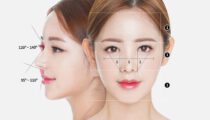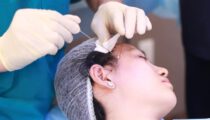Is rhinoplasty a safe procedure? Why?
Recently, the structural rhinoplasty method has attracted considerable attention. This method is known for delivering comprehensive improvements to the nose, yielding impressive results. However, structural rhinoplasty is a surgical procedure involving interventions, so the primary concern revolves around safety issues that may arise in the future. Follow this article to determine whether structural rhinoplasty is safe!
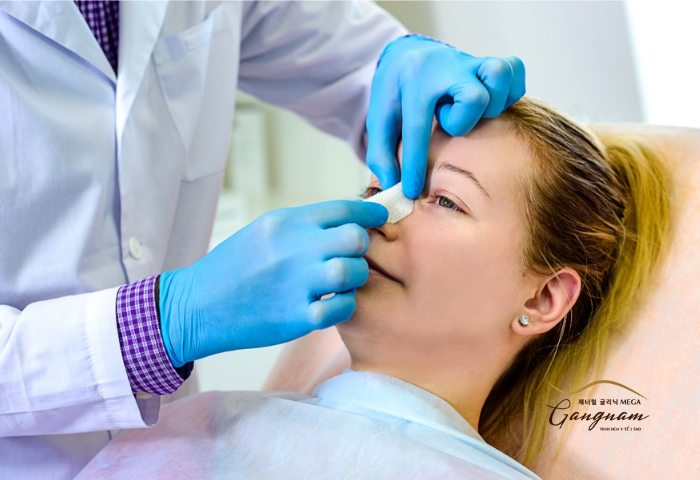
Is structural rhinoplasty considered safe?
What is structural rhinoplasty?
Structural rhinoplasty is a professional cosmetic surgical method aimed at improving and adjusting the shape of the nose according to the patient’s desires. This process involves deep intervention into the internal structure to create a new, more beautiful nose that harmonizes with facial features. In structural rhinoplasty surgery, a specialized doctor will adjust structural components such as the nasal septum, nasal bridge, nasal tip, nasal wings, nostrils, and the nasal dorsum to achieve the most perfect shape.
This method is typically applied to individuals with issues related to the shape of the nose who desire a transformation in their appearance. Examples include a flat nose, a deviated nose, a nose with trauma from an accident, excessively large nose, or a nose that has undergone previous surgeries. During the surgery, imperfections are corrected and arranged, often utilizing autologous or artificial materials to create a naturally beautiful and harmonious nose that suits the patient’s face and preferences.
One crucial aspect of structural rhinoplasty is its ability to be completely customized according to the patient’s wishes. By discussing specific requirements for the desired shape and size of the nose with the cosmetic surgeon, patients can convey their expectations. The surgeon will then assess these requests, analyze them in detail, and perform the intervention to achieve the most comprehensive results possible. Although structural rhinoplasty involves a considerable level of intervention, following the doctor’s postoperative care instructions and recovery period often leads to positive outcomes. Most cases result in a natural-looking nose without leaving significant visible marks.
The Invasiveness of Structural Rhinoplasty Surgery
Structural rhinoplasty is a form of cosmetic surgery with a varying degree of invasiveness, ranging from moderate to high depending on each specific case. The level of invasion is determined by the extent of intervention and the complexity of the surgical process. Below, we will explore the invasiveness of structural rhinoplasty surgery and the potential risks associated with each level:

Structural rhinoplasty, with a moderate to high level of invasiveness, may potentially result in complications
Moderately Invasive Structural Rhinoplasty: In moderately invasive structural rhinoplasty, the surgeon typically adjusts the nose structure meticulously and in detail without requiring deep intervention into the internal structure of the nose. This level of invasion usually involves procedures such as narrowing the nasal wings or making minor adjustments to the nasal bridge. The risk of complications is not high; however, common reactions such as swelling, pain, bleeding, and nasal fluid accumulation are inevitable due to the body’s normal responses. Nevertheless, without careful care, there is a potential risk of infection.
Highly Invasive Structural Rhinoplasty: In cases of highly invasive structural rhinoplasty, the surgical process requires deep intervention into the nose’s structure. The treating surgeon may perform surgical cutting techniques to adjust details and may need to replace or reconstruct a portion of the nasal cartilage. The risk of complications with this method is relatively high, especially for individuals with weak immunity, slow recovery, or a tendency to allergies. Possible manifestations include prolonged swelling, excessive bleeding, large scars, and postoperative infections.
The risk of complications in structural rhinoplasty depends heavily on individual patient factors, such as overall health, lifestyle, and adherence to postoperative instructions. To minimize risks and ensure the best results, the initial consultation process is crucial, and choosing an experienced and reputable plastic surgeon is essential. Patients also need to thoroughly research the procedure, recovery time, and potential risks before deciding to undergo structural rhinoplasty surgery.
Addressing the Safety of Structural Rhinoplasty
Structural rhinoplasty shares similarities with other common types of cosmetic surgeries. The safety of this method is most effectively ensured when performed by experienced professionals in a high-quality medical environment. Conversely, if rhinoplasty is conducted in a low-quality healthcare facility, lacks proper infrastructure, or is carried out by inadequately qualified surgeons, the potential risks can be significant.
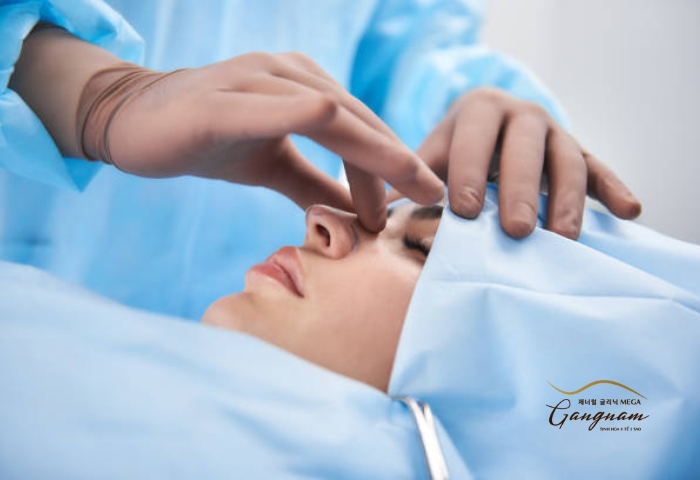
The structural rhinoplasty method is only safe when it meets the requirements of medical technique
Here are some important factors regarding the safety of structural rhinoplasty surgery:
- Choose an Experienced Cosmetic Surgeon: One of the most crucial factors for the safety of the surgery is selecting a specialized and experienced cosmetic surgeon. Patients should research and examine the doctor’s reputation, review their previous surgical cases, and ensure they are certified and licensed to practice.
- Complete Examination and Consultation: Before deciding to undergo surgery, thorough examination and consultation with the cosmetic surgeon are necessary. Based on the body indicators, the surgeon will assess your overall health status, provide an evaluation of the surgical feasibility, and discuss expected outcomes.
- Safe Surgical Environment: The surgical procedure should be conducted in licensed cosmetic clinics that adhere to healthcare safety standards. The medical team must be trained and experienced in handling unexpected situations during cosmetic surgeries.
- Postoperative Care: Postoperative care plays a crucial role in the safety and success of structural rhinoplasty. Patients need to adhere to all instructions regarding nose care after surgery, including hygiene practices, medication usage, and limiting physical activities.
However, it is essential to remember that no surgery is entirely risk-free. Mental preparation for potential risks and unforeseen complications, such as infection, swelling, scarring, or achieving results below expectations, is necessary. Nonetheless, by choosing reliable healthcare services and following the doctor’s instructions diligently, these risks can be minimized to the fullest extent possible.
Signs of an Unsuccessful Rhinoplasty
Structural rhinoplasty surgery can yield favorable results when performed by an experienced cosmetic surgeon who adheres closely to postoperative guidelines. However, there are cases where influences from both internal and external factors can lead to outcomes that are completely different from expectations. Below are some signs you may encounter in such situations:
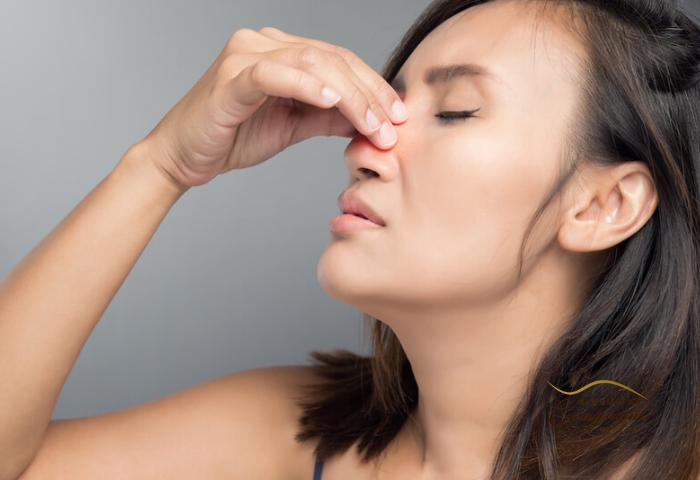
Consider alternative nose lift methods to minimize surgical complications
- Manifestations of persistent swelling, bruising, and prolonged pain despite medical intervention.
- Discoloration of the nose, unnatural coloration, or prominent nasal cartilage lines under sunlight.
- Asymmetry, deviated nasal wings, inappropriate nasal height, or uneven nostrils after surgery.
- Prolonged internal swelling and pain, especially in areas with high levels of surgical intervention.
- Poor healing of surgical incisions resulting in dark or white scars after the nose has healed.
- Compression and breathing difficulties, indicating a serious condition that requires thorough examination.
If you experience any of these signs, it is crucial to contact your treating physician immediately for examination and timely intervention. Do not overlook these symptoms as they not only affect appearance but also have significant implications for overall health.
In cases where your nose has minimal issues, and the primary goal is to enhance nasal height, non-invasive cosmetic procedures such as biological thread nose lifts or filler injections may be considered. These methods are highly effective, offer quick recovery, have minimal side effects, and mitigate various risks.
This article aims to address concerns regarding the safety of structural rhinoplasty. We hope it helps you make an informed decision before undergoing nose surgery. If you have any further questions, feel free to contact Mega Gangnam’s plastic surgeons directly at the hotline: 093.770.6666 for assistance!






